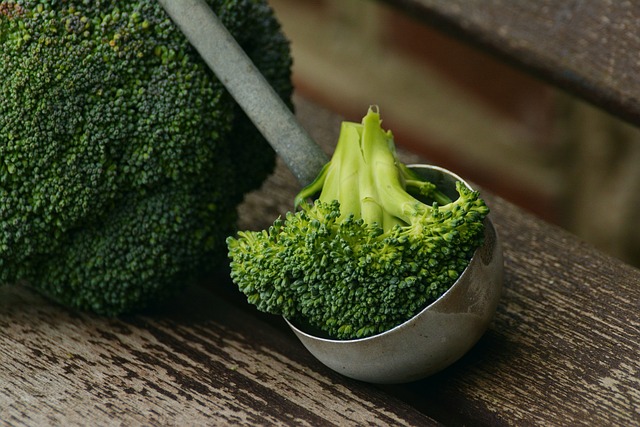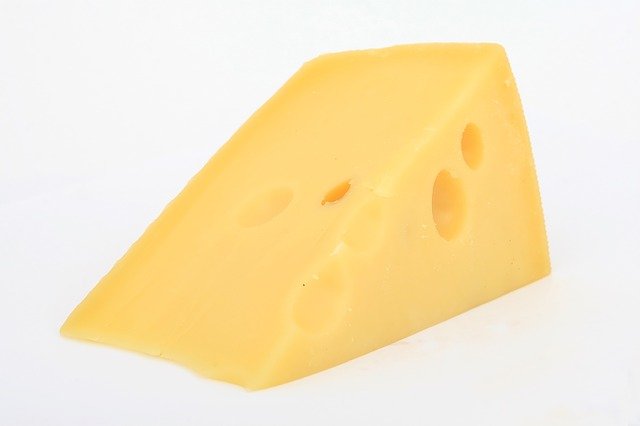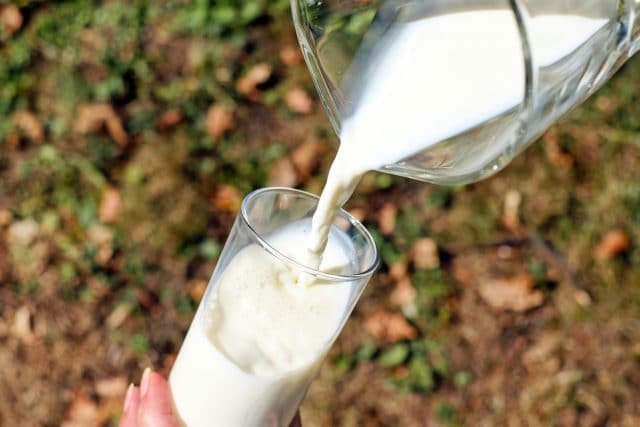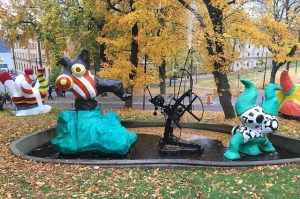10 Things That Appear Natural But Are Human Creations
When you see the word “natural” plastered on a food label, it tends to conjure up images of clean eating—no preservatives, no chemicals, and definitely something healthy. The truth? That word doesn’t mean nearly as much as you might hope.
In the U.S., the FDA allows food companies to label something “natural” as long as it doesn’t contain any synthetic ingredients. That’s it. So if someone added a generous dollop of pork fat to your chocolate peanut butter mix, guess what? It’s still “natural.” Healthy? Not really. Free of preservatives? Maybe. But that label doesn’t guarantee anything remotely nutritious—just non-synthetic.
This leads to a bigger, weirder realization: many things we think of as “natural” only seem that way because we’ve gotten used to them. What we perceive as normal or nature-approved often just means “familiar.” That doesn’t mean it actually is.
Turns out, nature is full of surprises, and what we think is natural may just be a well-marketed illusion.
10. Farmed Salmon Isn’t Actually Salmon Colored

Salmon is America’s second most popular seafood, right behind shrimp. Every year, Americans eat nearly a billion pounds of it. With that kind of demand, it’s no surprise that 70% of all salmon consumed globally is farm-raised.
There’s nothing inherently wrong with farm-raised salmon—as long as it’s done ethically and sustainably. But there’s one detail that might surprise you: that iconic pink-orange color? It’s not natural.
In the wild, salmon get their color from their diet, primarily krill and shrimp, which are packed with astaxanthin, a red-orange pigment. It’s the same reason flamingos are pink. But farmed salmon aren’t eating shrimp cocktails—they’re fed a formulated diet, typically a dry pellet mix made from fish, soy, corn, and other fillers. It keeps them healthy, but it doesn’t contain enough of that pigment.
What do salmon farmers do? They add synthetic astaxanthin to the feed. Without it, farmed salmon flesh is naturally gray, and that’s not something most people want to see on their dinner plate. The fish is still nutritious, but the color is for your eyes, not your health.
9. Broccoli Doesn’t Occur Naturally—It Was Engineered by Farmers

When we think about what’s “natural” food and what’s not, something like a Twinkie clearly lands on the unnatural side, while broccoli feels like the poster child for healthy, natural eating. But here’s the twist—broccoli doesn’t actually exist in nature.
Broccoli is entirely man-made. It was created through selective breeding by Italian farmers, dating all the way back to the 6th century BC in ancient Rome. These early agriculturalists weren’t using labs or chemicals—they were just playing matchmaker with plants.
Broccoli was bred from wild cabbage, a plant that also gave rise to kale, cauliflower, Brussels sprouts, and more. Farmers would grow a crop and look for plants with the traits they liked best—thicker stems, more flowering buds, a milder flavor—and then selectively pollinate those, using their seeds for the next generation. Over time, this slow and deliberate process led to the vegetable we now know as broccoli.
8. The Surprising Truth About Lemons: A Man-Made Hybrid?

When you think of lemons, you probably picture their bright yellow color, tangy taste, and the way they add a burst of flavor to various dishes. Lemons are truly a kitchen staple, used worldwide to enhance the taste of both sweet and savory foods. From adding a zing to meat, fish, and vegetables to being a key ingredient in dairy products, drinks, and desserts, lemons are incredibly versatile. In fact, nearly 21 million metric tons of lemons and their close cousins, limes, are produced annually.
Now, here’s where things get interesting. Citrus fruits seem to have made their appearance in the wild around 8 million years ago. Due to the similarities among different citrus varieties, it’s possible to cross-breed them to create new fruits, much like how apples can be selectively bred to produce various cultivars.
It turns out that the lemon is the result of a cross between a pomelo and a mandarin, which led to the creation of a sour orange. Later, this sour orange was crossed with a citron, giving us the sour, yellow fruit we know today as the lemon. But here’s the twist – this process might not have been entirely natural. While it’s true that plants growing in close proximity can cross-pollinate naturally, some experts believe that human intervention may have played a role in the development of the lemon.
7. Flamingos Aren’t Naturally Pink

The one thing everyone thinks they know about flamingos is that they’re pink. Long legs, curved neck, lawn ornament vibes—definitely pink. But here’s the weird truth: flamingos are not naturally pink at all. They’re born a grayish-white color.
So what’s turning them into walking bubblegum? It’s all in the diet.
Flamingos feast on food rich in carotenoids—those are natural pigments found in things like algae, shrimp, and even carrots. Shrimp get their color from eating algae, and flamingos double-dip by eating both shrimp and algae. That high dose of beta-carotene gets processed by the flamingo’s liver and ends up being deposited in their skin and feathers.
The more pigment-rich food they eat, the more vivid the coloring. That’s why some flamingos look pale pink while others go full-on hot pink or even reddish-orange. It’s like nature’s version of self-tanner, but built into the meal plan.
6. The Truth About Orange Cheese: It’s All an Illusion

Cheese is a global favorite, with over 22 million metric tons produced every year. That’s a staggering amount, especially when you consider there are eight billion people on the planet. On average, that works out to about 5.5 pounds of cheese per person annually. But let’s be real – if you’re an American, you’re likely munching your way through around 41.8 pounds of cheese per year. That’s a whole lot of cheese! And chances are, some of that cheese is the classic orange cheddar we all know and love. But here’s the kicker: that orange color? It’s not natural.
So, where does that vibrant orange hue come from? The answer lies in a dye called annatto, which is derived from the seeds of a fruit. Annatto is added to cheese to give it that signature orange color, and the reason it’s used is simple – it doesn’t affect the flavor but changes the appearance, which was once considered a desirable trait.
To understand why orange cheese became a thing, we need to travel back to 16th and 17th century England. Back then, there was a peculiar craving for yellow milk. You see, cows that grazed on certain pastures during the summer would consume plants rich in carotenoids (the same pigments that give flamingos and salmon their vibrant colors). This diet made the milk appear richer, yellower, and, apparently, more flavorful.
But when winter rolled around, the cows were stuck eating stored food, and the milk they produced was whiter and less desirable. To make up for this seasonal dip in quality, farmers started adding annatto to the milk. The result? Cheese that looked yellow or orange, just like the summer milk, even though it wasn’t as rich or flavorful.
Here’s where things get even more interesting – and a little shady. Farmers quickly realized that the fat in the milk was where the real money was. Fat held the color and flavor, so they would skim it off and sell it as butter or cream, which were (and still are) highly profitable products. With the leftover pale, fatless milk, they’d add annatto to make it look rich and appealing when turned into cheese. In essence, they were committing fraud – making their cheese look like something it wasn’t to trick consumers into thinking it was of higher quality. And it worked. They made more money, and the trend of orange cheese was born.
5. Chickens As We Know Them Never Existed in the Wild

Have you ever seen a wild chicken? Probably not—and if you think you have, chances are it was just a feral one. Like pugs or poodles, today’s chickens are fully man-made, shaped by thousands of years of human intervention. They’re not wild animals and never have been in their current form.
Modern chickens are the descendants of jungle fowl, wild birds native to parts of Southeast Asia. But those wild ancestors are a far cry from the plump, egg-laying birds we know today. Archaeologists have dug deep—literally—to figure out where chickens came from, and it turns out that chickens followed the rice.
Where ancient humans started farming rice, chickens weren’t far behind. The theory goes that rice paddies attracted wild fowl, who gradually got used to people, stuck around for easy meals, and eventually were domesticated. The earliest solid evidence of this dates back about 3,600 years in what is now Thailand. From there, chickens spread across Asia and the Middle East, reaching Europe around 2,800 years ago.
Earlier theories suggested domestication happened over 8,000 years ago, but the evidence just doesn’t support it. Chickens, it seems, are younger than we thought, and they’ve always been more farm than forest.
4. The Myth of 8 Hours of Straight Sleep: A Closer Look at Natural Sleep Patterns

For years, we’ve been told that a solid 8 hours of sleep per night is the key to feeling well-rested and ready to tackle the day. But here’s the thing – this idea doesn’t have much historical backing, and it turns out that 8-hour straight sleep might not actually be the most natural sleep cycle for humans. So, what’s the alternative? Enter biphasic sleep.
Biphasic sleep is a pattern that involves two periods of sleep in a 24-hour period, rather than one long stretch. Typically, this means sleeping for a few hours during the day (often referred to as a “siesta”) and then a longer period at night. The key here is that it’s broken up – you don’t just sleep for eight hours straight.
Interestingly, studies have shown that when people are left to their own devices, without the influence of artificial light or strict schedules, they naturally gravitate toward this biphasic pattern. In one experiment, participants were found to sleep in two distinct phases: first, they’d sleep for three to five hours, then wake up and engage in various activities for a couple of hours, and finally, they’d return to sleep for another three to five hours. This isn’t just a modern quirk – similar patterns have been observed in various animals and even in pre-industrial societies where artificial light wasn’t a factor.
Why might this biphasic sleep pattern have been beneficial in the past? One theory is that it offered a form of protection against predators. In the distant past, when humans were more vulnerable to attacks, sleeping in one long, uninterrupted block of eight hours would have been risky. Waking up periodically during the night allowed for a greater level of awareness and readiness to respond to potential threats.
This biphasic sleep pattern challenges the modern notion that we need to sleep for eight hours straight. It suggests that our bodies might be wired for a more flexible approach to rest, one that aligns with natural cycles and historical practices. So, the next time you find yourself waking up in the middle of the night, don’t stress – you might just be tapping into a sleep pattern that’s more in tune with our evolutionary roots.
3. Being Tolerant of Lactose is Not Natural

If you’re lactose intolerant, you may have felt like you’re the odd one out—watching everyone else enjoy cheese and ice cream while you sit it out. But here’s the twist: you’re actually the normal one.
Roughly 68% of the global population can’t properly digest lactose, the sugar in milk. That makes lactose intolerance the default setting for most humans—and nearly all mammals. After weaning, most animals stop drinking milk and stop producing lactase, the enzyme that breaks down lactose. That includes humans—until fairly recently.
About 5,000 years ago, something strange happened. In parts of Europe, a genetic mutation popped up that allowed adults to keep producing lactase, making it possible to digest milk long after childhood. Why? Probably survival. During times of famine or disease, being able to drink milk without getting sick was a huge advantage. Over time, the mutation spread, and so did lactose tolerance—at least in certain populations.
2. The Truth About Brown Sugar: It’s Not as Natural as You Think

Have you ever heard someone say that brown sugar is healthier than white sugar? It’s a common belief, often tied to the idea that white sugar is overly processed or “bleached” to achieve its pure, white color, while brown sugar somehow retains more of its natural goodness. Well, here’s the surprising truth: brown sugar is not a more natural form of sugar. In fact, it’s just as refined as white sugar.
The process for making brown sugar is almost identical to that of white sugar. Both start out as refined white sugar, which is stripped of its natural molasses during processing. The only difference is that molasses is added back into the refined white sugar to give brown sugar its darker color and distinct flavor. So, while it may look and taste different, brown sugar is not in any way a “natural” or less processed alternative to white sugar.
And here’s the kicker – brown sugar is not inherently healthier either. While it does contain small amounts of nutrients from the added molasses, the difference is so minimal that it doesn’t make a significant impact on your overall health. At the end of the day, both brown and white sugar are primarily empty calories, providing sweetness without much else in the way of nutrition.
1. Cats Meow Almost Exclusively for the Benefit of Humans

If you’ve ever felt like your cat is trying to tell you something when it meows—you’re probably right. But here’s the surprising part: cats mostly meow just for humans. Out in the wild, cats are a lot quieter.
Feral and wild cats communicate through scent markings and body language. Most aren’t pack animals, so loud vocalizations are unnecessary—and inefficient. Kittens meow to their mothers, but once they’re weaned, that habit usually stops. Unless, of course, they’re around people.
Domestic cats, it turns out, never really grow out of their meowing phase—but only because it works on us. It’s not a universal cat language; it’s a learned behavior. Over thousands of years of domestication, cats figured out that humans are suckers for a sad or sassy “meow.”
That constant vocalizing isn’t random either. Studies show cats develop specific sounds to get what they want from their humans—whether that’s food, attention, or just to open the damn door. So when your cat talks to you, don’t dismiss it. It’s not just being cute. It’s being strategic.

























